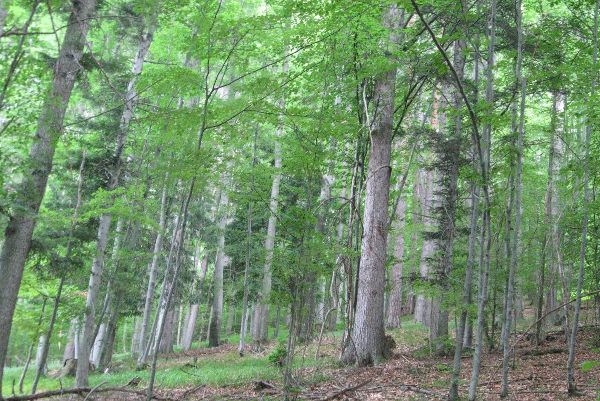Of commercial forests and virgin forests

Austria’s forests are today a cultivated landscape- the product of centuries of human care and attention. In fact, virgin forests, or forests without any human intervention, are rare.
The proportion of forest in Austria is around 48%. Despite this already very high forest endowment, the forest area continues to increase every year. (as of 2022, ÖWI)
Despite this, or maybe precisely because of it, forests have remained an element of genuine nature; the most truly ‘natural’ resource.
Today forestry strives to manage forests in line with the requirements of nature, taking into account natural development cycles and our knowledge about ecosystems.
Virgin forests and cultivated forests
While the virgin forest is left to go through the natural cycle of growth and decay, the development of cultivated forests is controlled by human activity, which improves the stability of the forest ecosystem and promotes the growth of desired tree species. The removal of old trees at specific times provides light and space for natural regeneration, or alternatively for reforestation.
The felling of mature trees pre-empts the decomposition phase of the virgin forest, thus ensuring the economic usability of the wood and preventing the area-wide ‘collapsing’ of forests.
Controlling the development of forests guarantees that forests can perform all their functions on a continuing basis – in particular their protective function.
Insight into Austria’s forests - the Austrian Forest Inventory
The Federal Research and Training Centre for Forests, Natural Hazards and Landscape (BFW) provides data on Austria’s forests by using the Austrian Forest Inventory, a large-scale monitoring system that provides information about timber resources within a particular forest, as well as the status and changes in the forest ecosystem.
The findings of the 2007 - 2009 Forest Inventory serve as the basis of decision-making for the forest and environmental policy, and provides comprehensive data for a great number of scientific projects.
The Austrian Forest Inventory has periodically collected a large volume of data on the status of, and the changes occurring in, Austrian forests for the last fifty years. The database provides comprehensive information on timber resources, the stability, structure and dynamic development of the forest ecosystem, as well as information about a forest’s sustained economic and ecological capacity.
The data is collected and evaluated by the Forest Research Centre (BFW) on behalf of the Federal Ministry of Agriculture, Forestry, Regions and Water Management.
Should you be interested, you can view the findings of the Austrian Forest Inventory on the BFW homepage. The data is organised by region (federal, provincial, or even district forest inspection bodies), by topic (forest area, stock etc.) as well as by international criteria and indicators. The findings are presented in table-form, while specific datasets can also be viewed as maps (Source BFW).